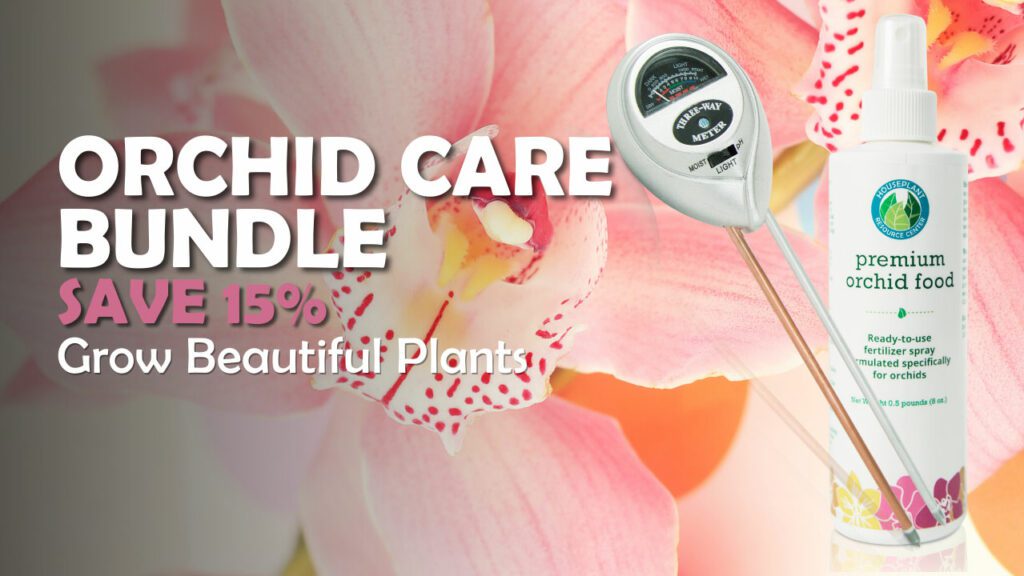Our Houseplant Resource Center team member once had a co-worker with a superstition about orchids; she believed they helped her business. Once her business dealings were complete and the flowers had bloomed and fallen off, she would throw the orchid away and get a new one. Sad, but true. At Houseplant Resource Center, we were shocked and dismayed that someone would dispose of such a beautiful plant and not care for it. While orchids do have a reputation of being difficult to care for, it’s worth the extra effort to see your plant bloom over and over again and have the satisfaction of knowing you helped.
Here are the answers to our orchid identification quiz, and we hope you love your orchids as much as we love ours.
Vanilla Orchid
Vanilla orchids are the primary source of vanilla flavoring and are primarily grown in Mexico and Madagascar. This is a more difficult orchid to grow because of its high temperature and humidity needs, and it’s recommended for those with a greenhouse. Vanilla orchids need temperatures between 80 and 85 degrees and 85% humidity, which is very hard to accomplish in a home.
Jewel Orchid
Interestingly enough, the Jewel orchid is desired by growers, not because of its flowers, but because of its leaves. They do blossom in the fall and winter if taken care of properly in the spring and summer. The jewel orchid likes a nice shaded area, not too much direct sunlight or it will burn. Wait for the first inch of soil to be dry before watering, and you’ll have a healthy orchid ready to sprout its buds.
Lady Slipper Orchid
The lady slipper orchid resembles a dainty lady’s slipper. This orchid is native to Europe and the Americas, is the state flower of Minnesota and New Hampshire, and is endangered in some states. Lady slippers like just a little bit of light—not too much, but not dark either. Water your orchid once a week, and don’t wait until the potting compound is dry, unlike other orchids.
Moth Orchid (Phalaenopsis)
Moth orchids are one of the most popular and easiest orchids to grow. You can find them almost anywhere that plants are sold. Dry out your potting compound before watering again and place it in bright but indirect light. Good orchid fertilizer is recommended. Moth orchids are easy to grow because they like the room temperature to be anywhere between 70 and 80 degrees.
Lady of the Night Orchid
This sultry orchid gets its name because of the exotic fragrance it exudes in the evenings. It’s native to Central and South America and has heart-shaped, white to pale-green flowers. Lady of the night orchids like the bright sun and water a few times a week, and humidity in the range of 40 to 70%.
There you have it, answers to our orchid identification quiz. We hope you enjoy your orchids and take care of them, because, as you can see, their reputation for being hard to grow is not always the case. We encourage you to nurture and appreciate your orchid, and it will, in turn, give you years of satisfaction.
To learn more about orchids, check out our other articles or visit our online shop. We also invite you to join our Facebook community where you’ll find everything you need to know to grow your orchid garden and connect with other orchid lovers just like you.



